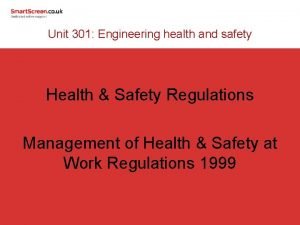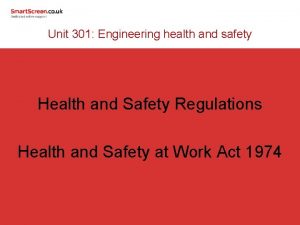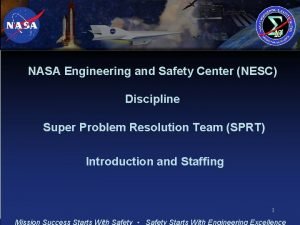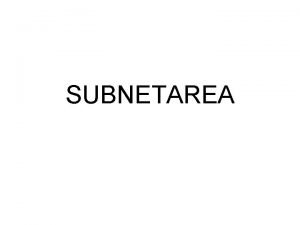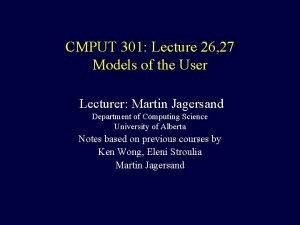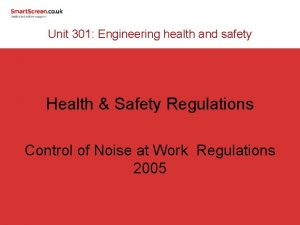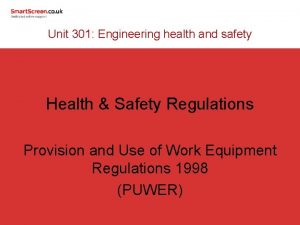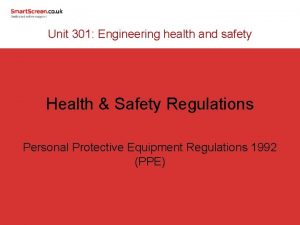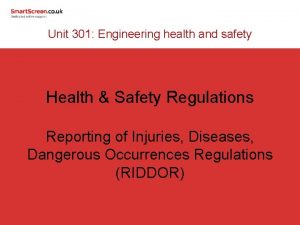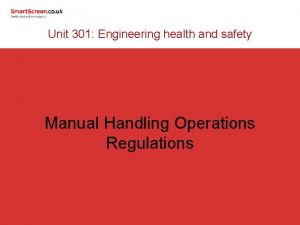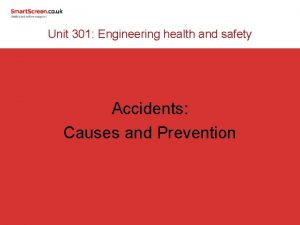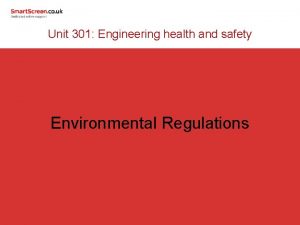Unit 301 Engineering health and safety Health Safety












- Slides: 12

Unit 301: Engineering health and safety Health & Safety Regulations Control of Substances Hazardous to Health (COSHH)

Regulations There is a range of health and safety regulations applicable in a fabrication and welding environment. These include: Health & Safety at Work Act 1974 (HASAWA) Control of Substances Hazardous to Health (COSHH) Provision and Use of Work Equipment Regulations (PUWER) Reporting of Injuries, Diseases, Dangerous Occurrences Regulations (RIDDOR) Management of H&S at Work Regulations Personal Protective Equipment at work regulations (PPE) Noise at Work Regulations

Control of Substances Hazardous to Health COSHH is a law to protect others from the affect of hazardous substances. Employers do this by: • • identifying the health hazards deciding how to prevent harm to health (risk assessment) introducing control measures ensuring control measures are used maintaining any control measures providing information, instruction and training for employees and others providing monitoring and health surveillance in appropriate cases planning for emergencies.

Identify Health Hazards Hazardous substances include: • • • chemicals products containing chemical gases fumes dust germs that cause disease. Lead, asbestos and radioactive materials are not covered by COSHH as they have their own regulations.

Identify Health Hazards • Manufacturers of hazardous substances must supply data sheets to provide guidelines for their safe use, storage and disposal. • A manufacturers product that might produce a hazardous substance will have a safety data sheet available. – Welding electrodes themselves are not hazardous but the fumes they produce may contain chemicals that are. • A safety data sheet is not a risk assessment. • It will provide the information needed to inform a risk assessment

Control of Substances Hazardous to Health • • Step 1: Step 2: Step 3: Step 4: Step 5: Step 6: Step 7: Step 8: Assess the risks Decide on precautions Prevent or control? Ensure measures are used Monitor exposure Undertake health surveillance (if required) Prepare plans and procedures Inform and train

Risk Assessment • Hazard Anything that can cause harm • Risk Chances of being harmed Severity of harm

Risk Assessment • Step 1: Identify the hazards • Step 2: Decide who might be harmed and how • Step 3: Evaluate the risks and decide on precautions • Step 4: Record your findings and implement them • Step 5: Review your assessment and update if necessary

Hierarchy of Control 1. 2. 3. 4. Eliminate use of hazardous substance Enclose the process Control exposure to the substance Provide adequate PPE should always be the last way to control a hazard

Potential Hazards Common hazards identified in a large proportion of engineering establishments include: • • • slippery or uneven surfaces spillages scrap or waste material inflammable materials faulty or missing guards faulty electrical connections and damaged cables.

Potential Hazards • • Material ejection (swarf from drilling) Pressure and stored energy (gas cylinders) Unshielded processes (welding arc) Volatile and toxic materials Dust and fumes Contaminants and irritants Material handling and transporting Working at heights

Any questions?
